Are you planning to improve the landscaping of your rental property?
Many landlords aren’t sure whether landscaping upkeep and improvements hold any significance. It always seems that other maintenance and repair needs inside the rental home should receive the top priority.
Since there are so many tasks every day, it can be hard to take care of the landscaping needs when it holds a low priority. But overgrown lawn and drainage issues will decrease your tenants’ quality of life and make it harder to find new renters.
Neglecting your investment property’s landscaping maintenance will have costly consequences. It’s much smarter to prioritize various upkeep and improvement tasks before the expenses grow out of control.
Now, we’ll go over the best landscaping maintenance tips and practices for rental properties. Use these suggestions to lower long-term running costs and boost the liveability in the rental.
#1: Limit the Use of Water Features
Rental landscape design doesn’t call for advanced or luxurious water features. While it’s true that these items would boost the curb appeal, the monthly expenses associated with waterfalls and fountains may hurt your investment.
Even if you opt for a water feature that continuously recycles the water, there may be more maintenance requirements than you’d expect. As moving parts wear down, you’ll need to repair the pump and other components at some point.
#2: Avoid Exotic Plants in the Yard
Non-native plants, especially tropical and exotic ones, aren’t a good option for rental properties. These plants demand more upkeep, soil additives, and water to keep them looking good and healthy.
Instead of picking unusual varieties, opt for plants that are common in your region. You’ll keep the water, care, and additive needs to a minimum. The benefits are clear: you’ll save time and money while contributing to sustainable landscaping practices.
#3: Establish a Landscaping Maintenance Schedule
Prevention is better than cure: don’t let your landscaping upkeep tasks turn into expensive repairs. The upfront costs of proper maintenance are always going to be lower than hiring professional help to fix serious problems.
Create a schedule that accounts for all the routine maintenance needs. For instance, check the exterior surfaces for damage, replace wood chips in the play areas, and nourish the soil on a regular basis.
#4: Inspect the Property’s Surroundings for Safety Hazards
An important part of landscaping maintenance is keeping things safe for your tenants and their guests. Many rental property landscapes have the same issues that can quickly be taken care of.
Here are the major safety issues that you should address as a landlord:
- Does the landscape have enough lighting fixtures? Ensure that there is enough light so that people wouldn’t trip and fall.
- Do you use the right materials for your rental landscaping needs? Materials for indoor use can become unsafe when exposed to outdoor elements.
- Are the trees being trimmed regularly? Overgrown tree limbs can become an issue for pedestrians and drivers alike.
- Inspect the walkways and turf for tripping hazards such as ground light fixtures that are hard to spot.
#5: Solve Any Drainage Problems
Ensuring proper drainage is an essential part of your landscaping efforts. Poor drainage leads to serious outcomes, including erosion, flooding, and unsanitary conditions in the yard.
Check the rental home’s surroundings for large items blocking the drainage, water traps, and substandard plant bed designs. All of these factors contribute to drainage issues in a modern home.
#6: Design a Pet Section
As a landlord, it’s not a wise move to prohibit pets in your property. Up to two-thirds of U.S. households have pets, which means that you would miss out on a lot of quality applicants.
A smart approach to pet-friendly rental property management is designating a separate pet section in the yard. The easiest method is roping off a patch of land. Doing this ensures that the rest of the landscape stays undamaged.
It’s recommended to use landscaping materials that are safe for animals. For instance, tiny pebbles or pea gravel works great for most pets. Additionally, you could create a digging pit for dogs. They have an instinct for digging and it’s better if they relieve this need in a designated spot.
The Bottom Line: Landscaping Maintenance for Rental Properties
Landscaping is a vital activity for keeping your rental property habitable and attractive. While you may find it hard to prioritize landscaping upkeep, it really pays to put in the effort for maintaining the landscape.
Here are our main tips for rental landscaping maintenance:
- Inspect your rental property’s landscape for drainage issues and safety hazards
- Avoid water features that are expensive and demand significant maintenance
- Create a landscaping upkeep schedule and prioritize the associated tasks
- Rope off a separate area for dogs, cats, and other pets, if applicable
- Plant regional flowers for sustainability and lower costs instead of any exotic plants


